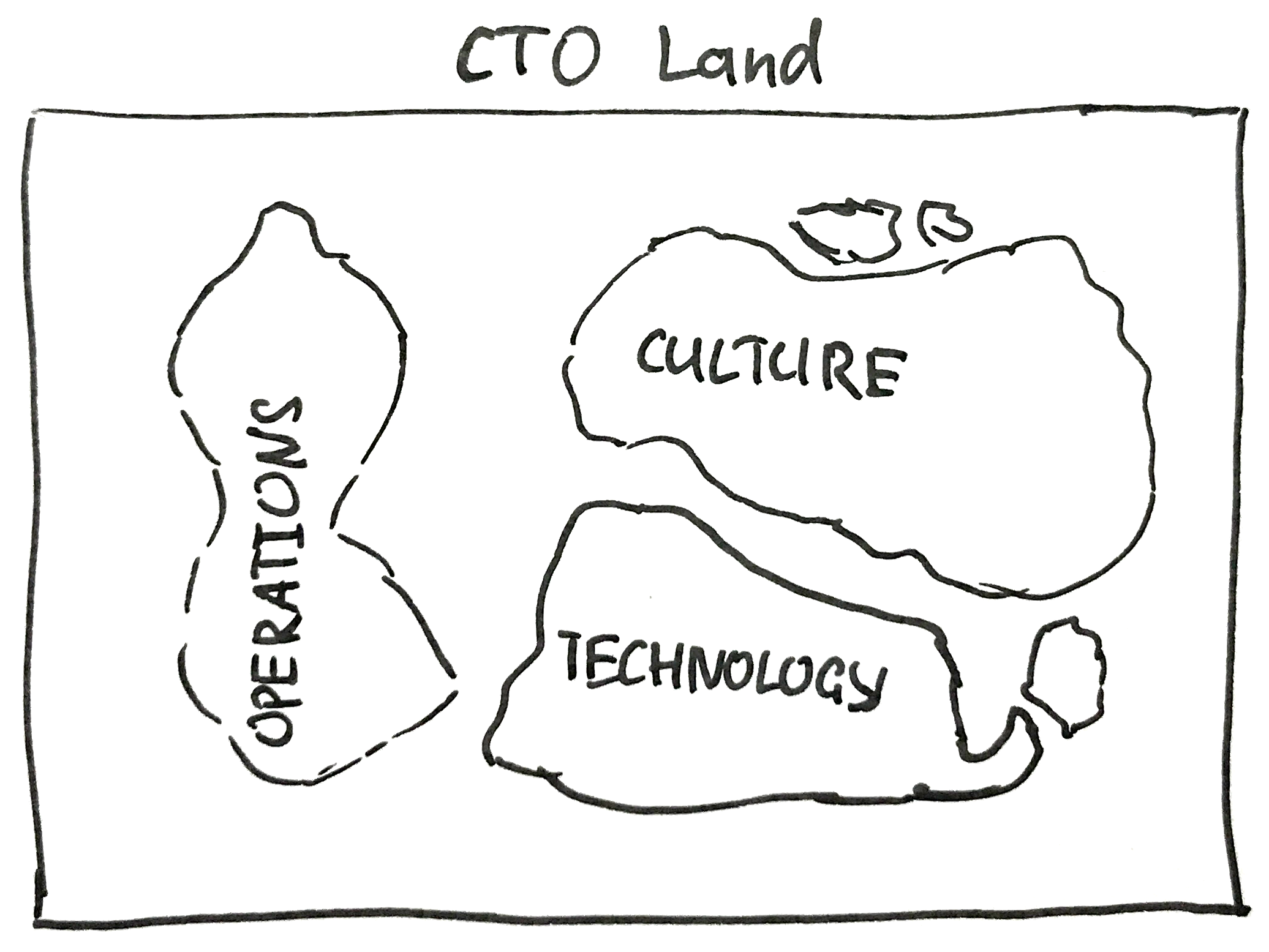Map of a CTO land
I have worked as a CTO in startups doing different things and working on different areas of product and company. I’m continuously looking for information to draw my map of a CTO land. In this way I structure my experience and knowledge to find gaps there. So far I have found 3 big parts of it: Culture, Technology and Operations.

Culture
Organizational culture encompasses values and behaviours that “contribute to the unique social and psychological environment of an organization”. Culture creates an environment where some people can live, shine and grow and others fade. It’s a kind of a virus when old-timers infect newcomers. People are the key to success or failure of any project. Thus, Culture is the main area where attention should be paid to.
Culture includes different things: values, rules, behaviors, norms, traditions, relations. It’s how you work together, how you communicate, how you learn and share, how you talk about each other, how you discuss and solve problems.
Technology
Technology is all about programming languages, frameworks, data, infrastructure, security, scalability and so on. The smaller the company the deeper CTO’s knowledge and experience in mentioned topics should be. When a company grow it’s impossible to cover all technological aspects with one person, but it’s essential to understand them. As well as learn and experiment all the time.
What about writing code? I ask myself this question when I have to shift from coding to management. I have decided that I can do prototyping, testing new solutions, writing proof-of-concept code, trying out a major refactoring just to see if it works — these things make sense, and they allow me to both perform my regular duties and keep in touch with code/technology.
Operations
Operations are about how and how well we do and deliver things. It’s about portfolio/project/product management, processes, collecting data and metrics, measure and report results, implement improvements.
In my practice, it’s usually achived by finding the flows, adding transparency and visibility to processes and data.
Having a map helps me to move forward with less fear and more energy.